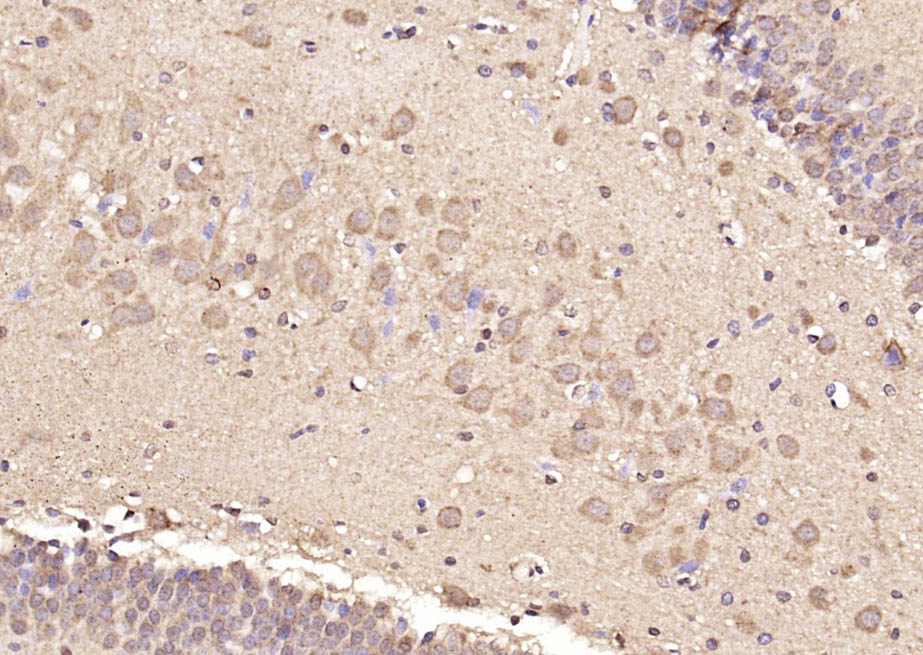
Rabbit Anti-GRAMD2 antibody
GRAM domain containing 2; GRAM domain containing protein 2; GRAMD 2; GRAM2_HUMAN.
View History [Clear]
Details
Product Name GRAMD2 Chinese Name GRAM结构域蛋白2抗体 Alias GRAM domain containing 2; GRAM domain containing protein 2; GRAMD 2; GRAM2_HUMAN. Research Area Cell biology immunology Neurobiology Immunogen Species Rabbit Clonality Polyclonal React Species Rat, (predicted: Human, Mouse, Chicken, Dog, Cow, Horse, Sheep, ) Applications WB=1:500-2000 ELISA=1:5000-10000 IHC-P=1:100-500 IHC-F=1:100-500 ICC=1:100-500 IF=1:100-500 (Paraffin sections need antigen repair)
not yet tested in other applications.
optimal dilutions/concentrations should be determined by the end user.Theoretical molecular weight 40kDa Cellular localization The cell membrane Form Liquid Concentration 1mg/ml immunogen KLH conjugated synthetic peptide derived from human GRAMD2: 151-250/354 Lsotype IgG Purification affinity purified by Protein A Buffer Solution 0.01M TBS(pH7.4) with 1% BSA, 0.03% Proclin300 and 50% Glycerol. Storage Shipped at 4℃. Store at -20 °C for one year. Avoid repeated freeze/thaw cycles. Attention This product as supplied is intended for research use only, not for use in human, therapeutic or diagnostic applications. PubMed PubMed Product Detail GRAMD2 is a 354 amino acid single-pass membrane protein that contains one GRAM domain and is encoded by a gene that maps to human chromosome 15q23. Encoding more than 700 genes, chromosome 15 is made up of approximately 106 million base pairs and is about 3% of the human genome. Angelman and Prader-Willi syndromes are associated with loss of function or deletion of genes in the 15q11-q13 region. In the case of Angelman syndrome, this loss is due to inactivity of the maternal 15q11-q13 encoded UBE3A gene in the brain by either chromosomal deletion or mutation. In cases of Prader-Willi syndrome, there is a partial or complete deletion of this region from the paternal copy of chromosome 15. Tay-Sachs disease is a lethal disorder associated with mutations of the HEXA gene, which is encoded by chromosome 15. Marfan syndrome is associated with chromosome 15 through the FBN1 gene.
Subcellular Location:
Membrane; Single-pass membrane protein (Potential).
Similarity:
Contains 1 GRAM domain.
SWISS:
Q8IUY3
Gene ID:
196996
Database links:Entrez Gene: 196996 Human
Entrez Gene: 546134 Mouse
SwissProt: Q8IUY3 Human
SwissProt: Q3V3G7 Mouse
Product Picture
References (0)
No References
Bought notes(bought amounts latest0)
No one bought this product
User Comment(Total0User Comment Num)
- No comment



 +86 571 56623320
+86 571 56623320
 +86 18668110335
+86 18668110335

